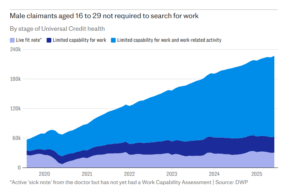“Tear up laws so we can strike faster,” screams the headline in The Telegraph (2 August), quoting RMT general secretary Eddie Dempsey. The scare quotes are barely needed. The framing does the job. The subheading warns that ministers believe such a move would “pave the way for RMT members to paralyse the country on a whim.” It’s the old Thatcherite fantasy: union bosses as saboteurs, the public as collateral.
Let’s start with what Dempsey actually said. Speaking to the union’s annual meeting in June, he’s quoted as saying:
“What I want is the ability to take my members out on strike as fast as possible… [the law] prevents us from being able to respond like lightning when our members are under attack.”
“If any employer in a sector behaves like P&O, we want to be able to bring our members out in the entire sector.”
This is not an attack on the public. It’s a demand for the bare minimum of collective power. A strike delayed by red tape is not a strike. It’s going through the motions. A ritual. What Dempsey calls for is responsiveness, the capacity for workers to fight back with speed and force when their rights, wages, or jobs are threatened. It is, in fact, a defensive position, one shaped by decades of anti-union law and the erosion of workplace power.
But to The Telegraph, this is “bragging about tearing up strike laws and fast-tracking disruption.” To Greg Smith MP, it’s “the power to paralyse the country on a whim.” The right’s framing is clear: the employer has the right to fire, restructure, offshore and cut; the worker has only the right to wait, ballot, beg.
Even the historical context is contorted. The article recalls that Margaret Thatcher reduced the notice period for strike action in 1990 “as a sop to the unions.” A sop. After banning closed shops, smashing the miners, and neutering industrial militancy, a single week’s notice was a concession. You’d laugh if it wasn’t so bleak.
The real outrage, for the right, is not about strikes. It’s about who gets to wield power. “Starmer’s party, bankrolled by the same union chiefs… exists to serve the people now threatening national shutdowns,” Smith declares, turning basic trade union funding into a conspiracy theory. And the punchline? “The Conservatives will always stand with passengers over union bosses.”
But the modern-day barons don’t run trade unions. They sail in £100 million yachts, anchor off tax havens, and dine with ministers. It’s always been like this. The captains of industry hold the cards. The union member holds the line. Yet the press still wants you to believe the real problem is a rail worker in Doncaster.
But in the world of The Telegraph, Britain is still the country of the stockbroker commuting in from the Chilterns, a rolled-up FT or Telegraph under one arm and a quiet sense of entitlement under the other. The worker is there to doff a flat cap. The train cleaner is to be unseen. The guard is to be moaned at when the train is more than five minutes late. Industrial action doesn’t fit this worldview. Not because it’s disruptive, but because it reminds them the railway (and the country) runs on labour they’d rather forget.
What’s truly appalling (though barely mentioned in any of this) is what workers can’t do. They can’t strike in solidarity with dockers abroad. They can’t refuse to load arms shipments bound for Gaza. They can’t use their industrial muscle to win better wages across sectors. Secondary action, political strikes, and international solidarity are still outlawed. In a supposedly free democracy, a worker has fewer rights on the picket line than a shareholder does in a boardroom.
In the small print, the RMT reminds us of the truth:
“Current anti-trade union laws are the most restrictive in Western Europe and need to be repealed to restore balance and fairness to Britain’s workplaces.”
That’s the story here. Not “lightning strikes” or “chaos on a whim,” but a movement demanding the ability to act (fast, strong, and with purpose) when bosses attack. The right fears not disruption, but organisation. Not chaos, but class solidarity. The strike is not the threat. The threat is that it might work.




